Product Description
| 1. Price : | EXW Price |
| 2.Shipping Way: | By Sea, DHL, UPS, FEDEX or as customers’ requirements |
| 3.Payment Terms: | Via T/T ,L/C ,Paypal ,Westerm Union,Moneygram. |
| 4.Delivery Time: | Within 30 days after deposit or as customers’ requirement |
| 5.Packaging:Packaging: |
1.Carton Box, 4.We can perform according to customer’s requirements |
Ideer Established in 2571, which is a professional manufacturer and exporter that is concerned with the design, development and production of auto parts. We are located in HangZhou, with convenient transportation access. All of our productscomply with international quality standards and are greatly appreciated in a variety of different markets throughout the world.
Covering an area of 10000 square meters, we now have over 100 employees, an annual sales figure that exceeds USD 300,000 and are currently exporting 80% of our production worldwide. Our well-equipped facilities and excellent quality control throughout all stages of production enables us to guarantee total customer satisfaction.
Besides, we have received ISO9001 and CE.As a result of our high quality products and outstanding customer service, we have gained a global sales network CZPT South America.
If you are interested in any of our products or would like to discuss a customorder, please feel free to contact us. We are looking CZPT to forming successful business relationships with new clients around the world in the near future.
/* January 22, 2571 19:08:37 */!function(){function s(e,r){var a,o={};try{e&&e.split(“,”).forEach(function(e,t){e&&(a=e.match(/(.*?):(.*)$/))&&1
| After-sales Service: | 1years |
|---|---|
| Warranty: | 1years |
| Type: | Steering Gears/Shaft |
| Samples: |
US$ 500/Piece
1 Piece(Min.Order) | Order Sample |
|---|
| Customization: |
Available
| Customized Request |
|---|
.shipping-cost-tm .tm-status-off{background: none;padding:0;color: #1470cc}
|
Shipping Cost:
Estimated freight per unit. |
about shipping cost and estimated delivery time. |
|---|
| Payment Method: |
|
|---|---|
|
Initial Payment Full Payment |
| Currency: | US$ |
|---|
| Return&refunds: | You can apply for a refund up to 30 days after receipt of the products. |
|---|
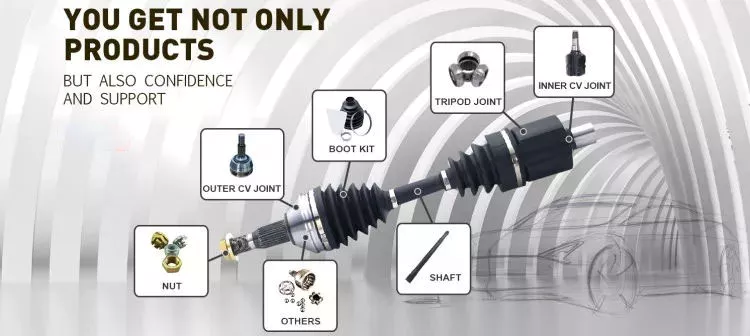
What factors should be considered when designing an efficient driveline system?
Designing an efficient driveline system involves considering various factors that contribute to performance, reliability, and overall system efficiency. Here are the key factors that should be considered when designing an efficient driveline system:
1. Power Requirements:
The power requirements of the vehicle play a crucial role in designing an efficient driveline system. It is essential to determine the maximum power output of the engine and ensure that the driveline components can handle and transfer that power efficiently. Optimizing the driveline for the specific power requirements helps minimize energy losses and maximize overall efficiency.
2. Weight and Packaging:
The weight and packaging of the driveline components have a significant impact on system efficiency. Lightweight materials and compact design help reduce the overall weight of the driveline, which can improve fuel efficiency and vehicle performance. Additionally, efficient packaging ensures that driveline components are properly integrated, minimizing energy losses and maximizing available space within the vehicle.
3. Friction and Mechanical Losses:
Minimizing friction and mechanical losses within the driveline system is crucial for achieving high efficiency. Frictional losses occur at various points, such as bearings, gears, and joints. Selecting low-friction materials, optimizing lubrication systems, and implementing efficient bearing designs can help reduce these losses. Additionally, employing advanced gear designs, such as helical or hypoid gears, can improve gear mesh efficiency and reduce power losses.
4. Gear Ratios and Transmission Efficiency:
The selection of appropriate gear ratios and optimizing transmission efficiency greatly impacts driveline efficiency. Gear ratios should be chosen to match the vehicle’s power requirements, driving conditions, and desired performance characteristics. In addition, improving the efficiency of the transmission, such as reducing gear mesh losses and enhancing hydraulic or electronic control systems, can contribute to overall driveline efficiency.
5. Aerodynamic Considerations:
Aerodynamics play a significant role in a vehicle’s overall efficiency, including the driveline system. Reducing aerodynamic drag through streamlined vehicle design, efficient cooling systems, and appropriate underbody airflow management can enhance driveline efficiency by reducing the power required to overcome air resistance.
6. System Integration and Control:
Efficient driveline design involves seamless integration and control of various components. Employing advanced control systems, such as electronic control units (ECUs), can optimize driveline operation by adjusting power distribution, managing gear shifts, and optimizing torque delivery based on real-time driving conditions. Effective system integration ensures smooth communication and coordination between driveline components, improving overall efficiency.
7. Environmental Considerations:
Environmental factors should also be taken into account when designing an efficient driveline system. Considerations such as emissions regulations, sustainability goals, and the use of alternative power sources (e.g., hybrid or electric drivetrains) can influence driveline design decisions. Incorporating technologies like regenerative braking or start-stop systems can further enhance efficiency and reduce environmental impact.
8. Reliability and Durability:
Designing an efficient driveline system involves ensuring long-term reliability and durability. Selecting high-quality materials, performing thorough testing and validation, and considering factors such as thermal management and component durability help ensure that the driveline system operates efficiently over its lifespan.
By considering these factors during the design process, engineers can develop driveline systems that are optimized for efficiency, performance, and reliability, resulting in improved fuel economy, reduced emissions, and enhanced overall vehicle efficiency.
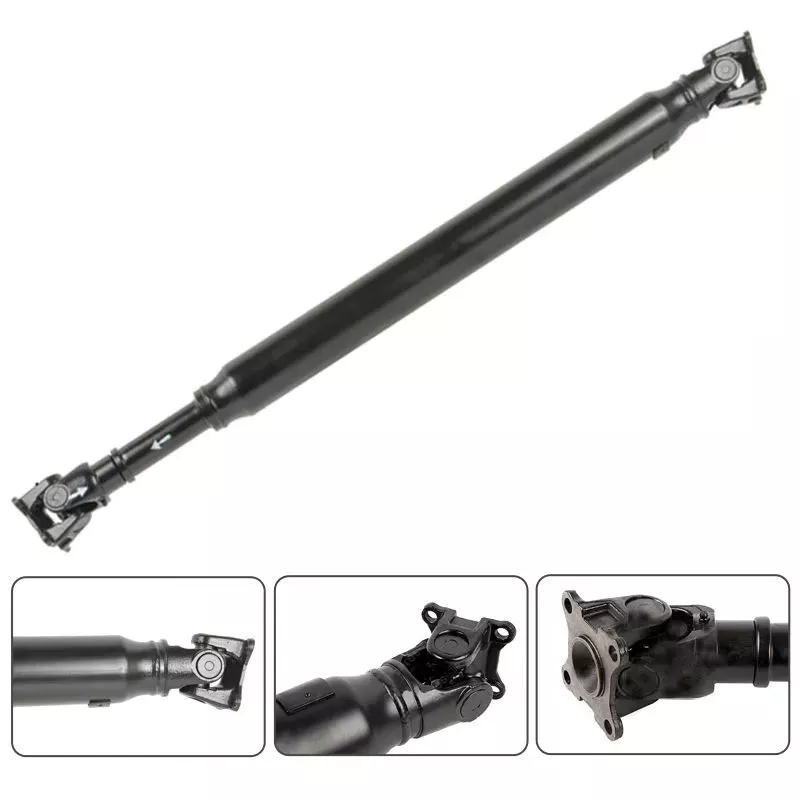
Are there any limitations or disadvantages associated with driveline systems?
While driveline systems offer numerous advantages in terms of power transmission and vehicle performance, there are also some limitations and disadvantages associated with their use. It’s important to consider these factors when designing, operating, and maintaining driveline systems. Let’s explore some of the limitations and disadvantages:
1. Complex Design and Integration:
Driveline systems can be complex in design, especially in modern vehicles with advanced technologies. They often consist of multiple components, such as transmissions, differentials, transfer cases, and drive shafts, which need to be properly integrated and synchronized. The complexity of the driveline system can increase manufacturing and assembly challenges, as well as the potential for compatibility issues or failures if not designed and integrated correctly.
2. Energy Losses:
Driveline systems can experience energy losses during power transmission. These losses occur due to factors such as friction, heat generation, mechanical inefficiencies, and fluid drag in components like gearboxes, differentials, and torque converters. The energy losses can negatively impact overall efficiency and result in reduced fuel economy or power output, especially in systems with multiple driveline components.
3. Limited Service Life and Maintenance Requirements:
Driveline components, like any mechanical system, have a limited service life and require regular maintenance. Components such as clutches, bearings, gears, and drive shafts are subject to wear and tear, and may need to be replaced or repaired over time. Regular maintenance, including lubrication, adjustments, and inspections, is necessary to ensure optimal performance and prevent premature failures. Failure to perform proper maintenance can lead to driveline malfunctions, increased downtime, and costly repairs.
4. Weight and Space Constraints:
Driveline systems add weight and occupy space within a vehicle. The additional weight affects fuel efficiency and overall vehicle performance. Moreover, the space occupied by driveline components can limit design flexibility, particularly in compact or electric vehicles where space optimization is crucial. Manufacturers must strike a balance between driveline performance, vehicle weight, and available space to meet the requirements of each specific vehicle type.
5. Noise, Vibration, and Harshness (NVH):
Driveline systems can generate noise, vibration, and harshness (NVH) during operation. Factors such as gear meshing, unbalanced rotating components, or improper driveline alignment can contribute to unwanted vibrations or noise. NVH issues can affect driving comfort, passenger experience, and vehicle refinement. Manufacturers employ various techniques, including vibration dampening materials, isolators, and precision engineering, to minimize NVH levels, but achieving complete elimination can be challenging.
6. Limited Torque Handling Capability:
Driveline systems have limitations in terms of torque handling capability. Excessive torque beyond the rated capacity of driveline components can lead to failures, such as shearing of gears, clutch slippage, or drive shaft breakage. High-performance vehicles or heavy-duty applications may require specialized driveline components capable of handling higher torque loads, which can increase costs and complexity.
7. Traction Limitations:
Driveline systems, particularly in vehicles with two-wheel drive configurations, may experience traction limitations, especially in slippery or off-road conditions. Power is typically transmitted to only one or two wheels, which can result in reduced traction and potential wheel slippage. This limitation can be mitigated by utilizing technologies such as limited-slip differentials, electronic traction control, or implementing all-wheel drive systems.
While driveline systems provide crucial power transmission and vehicle control, they do have limitations and disadvantages that need to be considered. Manufacturers, designers, and operators should carefully assess these factors and implement appropriate design, maintenance, and operational practices to optimize driveline performance, reliability, and overall vehicle functionality.
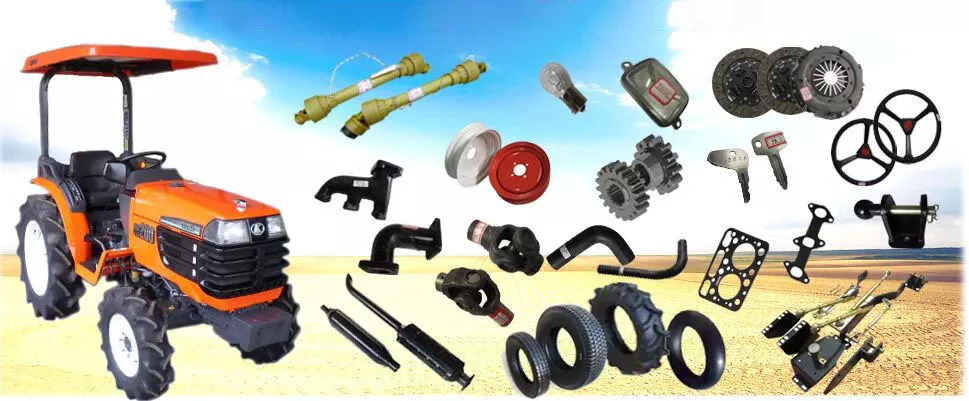
How do drivelines handle variations in torque, speed, and angles of rotation?
Drivelines are designed to handle variations in torque, speed, and angles of rotation within a power transmission system. They incorporate specific components and mechanisms that enable the smooth and efficient transfer of power while accommodating these variations. Here’s a detailed explanation of how drivelines handle variations in torque, speed, and angles of rotation:
Variations in Torque:
Drivelines encounter variations in torque when the power requirements change, such as during acceleration, deceleration, or when encountering different loads. To handle these variations, drivelines incorporate several components:
1. Clutch: In manual transmission systems, a clutch is used to engage or disengage the engine’s power from the driveline. By partially or completely disengaging the clutch, the driveline can temporarily interrupt power transfer, allowing for smooth gear changes or vehicle stationary positions. This helps manage torque variations during shifting or when power demands change abruptly.
2. Torque Converter: Automatic transmissions employ torque converters, which are fluid couplings that transfer power from the engine to the transmission. Torque converters provide a certain amount of slip, allowing for torque multiplication and smooth power transfer. The slip in the torque converter helps absorb torque variations and dampens abrupt changes, ensuring smoother operation during acceleration or when power demands fluctuate.
3. Differential: The differential mechanism in drivelines compensates for variations in torque between the wheels, particularly during turns. When a vehicle turns, the inner and outer wheels travel different distances, resulting in different rotational speeds. The differential allows the wheels to rotate at different speeds while distributing torque to each wheel accordingly. This ensures that torque variations are managed and power is distributed effectively to optimize traction and stability.
Variations in Speed:
Drivelines also need to handle variations in rotational speed, especially when the engine operates at different RPMs or when different gear ratios are selected. The following components aid in managing speed variations:
1. Transmission: The transmission allows for the selection of different gear ratios, which influence the rotational speed of the driveline components. By changing gears, the transmission adjusts the speed at which power is transferred from the engine to the driveline. This allows the driveline to adapt to different speed requirements, whether it’s for quick acceleration or maintaining a consistent speed during cruising.
2. Gearing: Driveline systems often incorporate various gears in the transmission, differential, or axle assemblies. Gears provide mechanical advantage by altering the speed and torque relationship. By employing different gear ratios, the driveline can adjust the rotational speed and torque output to match the requirements of the vehicle under different operating conditions.
Variations in Angles of Rotation:
Drivelines must accommodate variations in angles of rotation, especially in vehicles with flexible or independent suspension systems. The following components help manage these variations:
1. Universal Joints: Universal joints, also known as U-joints, are flexible couplings used in drivelines to accommodate variations in angles and misalignments between components. They allow for smooth power transmission between the drive shaft and other components, compensating for changes in driveline angles during vehicle operation or suspension movement. Universal joints are particularly effective in handling non-linear or variable angles of rotation.
2. Constant Velocity Joints (CV Joints): CV joints are specialized joints used in drivelines, especially in front-wheel-drive and all-wheel-drive vehicles. They allow the driveline to handle variations in angles while maintaining a constant velocity during rotation. CV joints are designed to mitigate vibrations, power losses, and potential binding or juddering that can occur due to changes in angles of rotation.
By incorporating these components and mechanisms, drivelines effectively handle variations in torque, speed, and angles of rotation. These features ensure smooth power transfer, optimal performance, and enhanced durability in various driving conditions and operating scenarios.


editor by CX 2024-05-07
China Best Sales Steering Column Shaft 48080-5X10A 48080-5X00A 48080-Ec700 48080-Ec71A for CZPT Navara D40 Pathfinder R51 2005- Drive Line
Product Description
| 1. Price : | EXW Price |
| 2.Shipping Way: | By Sea, DHL, UPS, FEDEX or as customers’ requirements |
| 3.Payment Terms: | Via T/T ,L/C ,Paypal ,Westerm Union,Moneygram. |
| 4.Delivery Time: | Within 30 days after deposit or as customers’ requirement |
| 5.Packaging:Packaging: |
1.Carton Box, 4.We can perform according to customer’s requirements |
Ideer Established in 2571, which is a professional manufacturer and exporter that is concerned with the design, development and production of auto parts. We are located in HangZhou, with convenient transportation access. All of our productscomply with international quality standards and are greatly appreciated in a variety of different markets throughout the world.
Covering an area of 10000 square meters, we now have over 100 employees, an annual sales figure that exceeds USD 300,000 and are currently exporting 80% of our production worldwide. Our well-equipped facilities and excellent quality control throughout all stages of production enables us to guarantee total customer satisfaction.
Besides, we have received ISO9001 and CE.As a result of our high quality products and outstanding customer service, we have gained a global sales network CZPT South America.
If you are interested in any of our products or would like to discuss a customorder, please feel free to contact us. We are looking CZPT to forming successful business relationships with new clients around the world in the near future.
/* January 22, 2571 19:08:37 */!function(){function s(e,r){var a,o={};try{e&&e.split(“,”).forEach(function(e,t){e&&(a=e.match(/(.*?):(.*)$/))&&1
| After-sales Service: | 1years |
|---|---|
| Warranty: | 1years |
| Type: | Steering Gears/Shaft |
| Samples: |
US$ 500/Piece
1 Piece(Min.Order) | Order Sample |
|---|
| Customization: |
Available
| Customized Request |
|---|
.shipping-cost-tm .tm-status-off{background: none;padding:0;color: #1470cc}
|
Shipping Cost:
Estimated freight per unit. |
about shipping cost and estimated delivery time. |
|---|
| Payment Method: |
|
|---|---|
|
Initial Payment Full Payment |
| Currency: | US$ |
|---|
| Return&refunds: | You can apply for a refund up to 30 days after receipt of the products. |
|---|
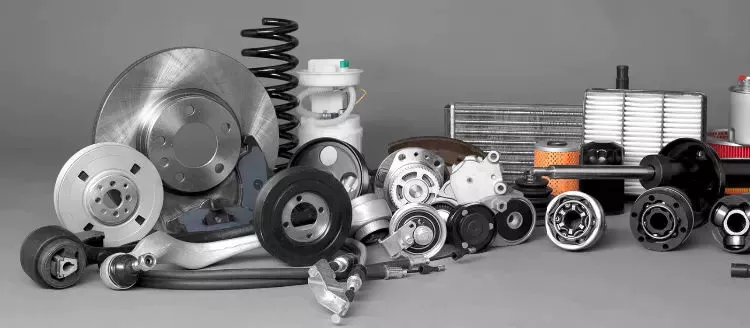
What maintenance practices are essential for prolonging the lifespan of driveline components?
Implementing proper maintenance practices is crucial for ensuring the longevity and optimal performance of driveline components. Regular maintenance helps identify potential issues, prevent major failures, and prolong the lifespan of driveline components. Here are some essential maintenance practices for prolonging the lifespan of driveline components:
1. Regular Inspections:
Performing regular visual inspections of driveline components is essential for detecting any signs of wear, damage, or misalignment. Inspect the driveline components, including driveshafts, universal joints, CV joints, differentials, and transmission components, for any cracks, leaks, excessive play, or unusual noise. Identifying and addressing issues early can prevent further damage and potential driveline failure.
2. Lubrication:
Proper lubrication of driveline components is crucial for minimizing friction, reducing wear, and ensuring smooth operation. Follow the manufacturer’s recommendations for lubrication intervals and use the appropriate type and grade of lubricant. Regularly check and maintain the lubrication levels in components such as bearings, gears, and joints to prevent excessive heat buildup and premature wear.
3. Fluid Changes:
Fluids play a vital role in driveline component performance and longevity. Regularly change fluids, such as transmission fluid, differential oil, and transfer case fluid, according to the manufacturer’s recommended intervals. Over time, these fluids can become contaminated or break down, leading to compromised performance and increased wear. Fresh fluids help maintain proper lubrication, cooling, and protection of driveline components.
4. Alignment and Balancing:
Proper alignment and balancing of driveline components are essential for minimizing vibration, reducing stress, and preventing premature wear. Periodically check and adjust the alignment of driveshafts, ensuring they are properly aligned with the transmission and differential. Additionally, balance rotating components, such as driveshafts or flywheels, to minimize vibrations and prevent excessive stress on driveline components.
5. Torque Check:
Regularly check and ensure that all driveline components are properly torqued according to the manufacturer’s specifications. Over time, fasteners can loosen due to vibrations or thermal expansion and contraction. Loose fasteners can lead to misalignment, excessive play, or even component failure. Regular torque checks help maintain the integrity and performance of the driveline system.
6. Maintenance of Supporting Systems:
Driveline components rely on the proper functioning of supporting systems, such as cooling systems and electrical systems. Ensure that cooling systems are functioning correctly, as overheating can cause driveline components to degrade or fail. Additionally, regularly inspect electrical connections, wiring harnesses, and sensors to ensure proper communication and operation of driveline components.
7. Proper Driving Techniques:
The way a vehicle is driven can significantly impact the lifespan of driveline components. Avoid aggressive driving, sudden acceleration, and excessive braking, as these actions can put undue stress on the driveline components. Smooth and gradual acceleration, proper shifting techniques, and avoiding excessive load or towing capacities help minimize wear and prolong component life.
8. Service and Maintenance Records:
Maintain comprehensive service and maintenance records for the driveline components. Keep track of all maintenance tasks, repairs, fluid changes, and inspections performed. These records help ensure that maintenance tasks are performed on time, provide a history of component performance, and assist in diagnosing any recurring issues or patterns.
By following these maintenance practices, vehicle owners can prolong the lifespan of driveline components, minimize the risk of failures, and ensure optimal performance and reliability of the driveline system.
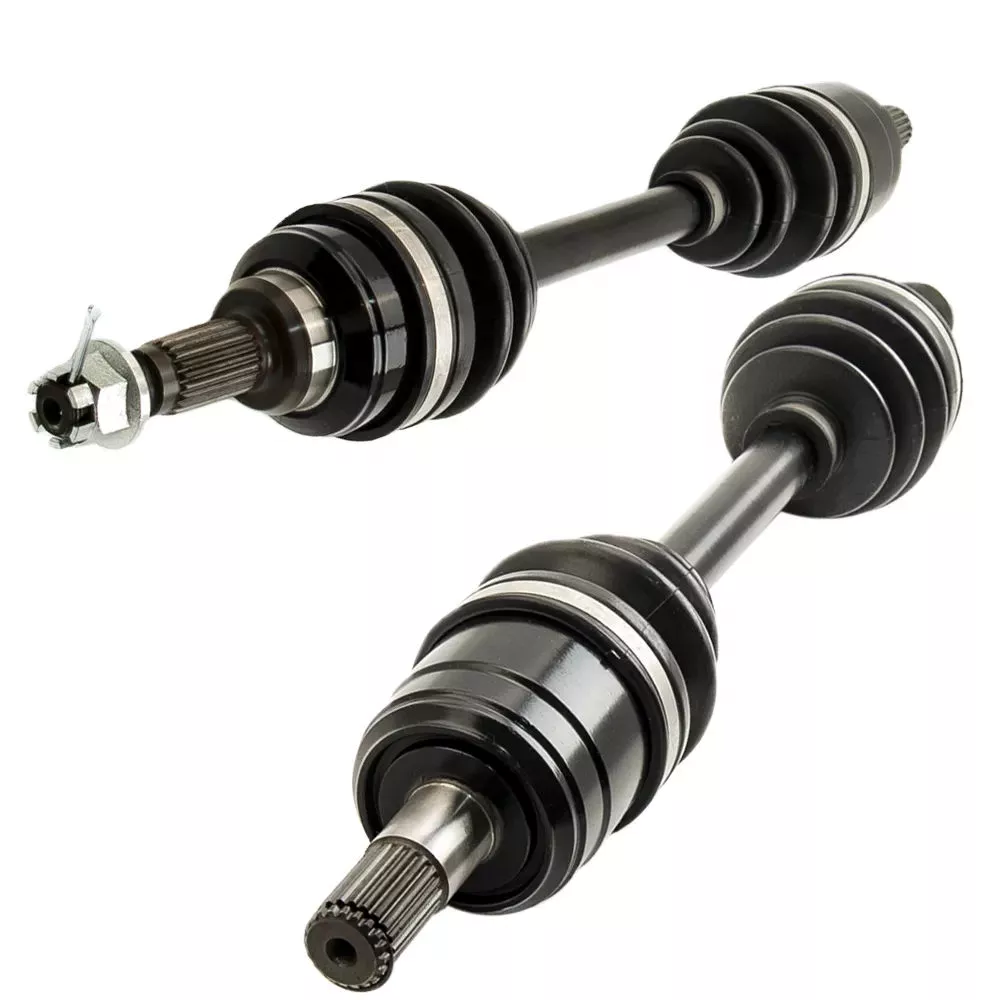
Can driveline components be customized for specific vehicle or equipment requirements?
Yes, driveline components can be customized to meet specific vehicle or equipment requirements. Manufacturers and suppliers offer a range of options for customization to ensure optimal performance, compatibility, and integration with different vehicles or equipment. Customization allows for tailoring the driveline components to specific powertrain configurations, operating conditions, torque requirements, and space constraints. Let’s explore the details of customization for driveline components:
1. Powertrain Configuration:
Driveline components can be customized to accommodate different powertrain configurations. Whether it’s a front-wheel drive, rear-wheel drive, or all-wheel drive system, manufacturers can design and provide specific components such as differentials, gearboxes, and drive shafts that are compatible with the required power distribution and torque transfer characteristics of the particular configuration.
2. Torque Capacity:
Driveline components can be customized to handle specific torque requirements. Different vehicles or equipment may have varying torque outputs based on their intended applications. Manufacturers can engineer and produce driveline components with varying torque-handling capabilities to ensure reliable and efficient power transmission for a range of applications, from passenger vehicles to heavy-duty trucks or machinery.
3. Size and Configuration:
Driveline components can be customized in terms of size, shape, and configuration to fit within the space constraints of different vehicles or equipment. Manufacturers understand that each application may have unique packaging limitations, such as limited available space or specific mounting requirements. Through customization, driveline components can be designed and manufactured to align with these specific dimensional and packaging constraints.
4. Material Selection:
The choice of materials for driveline components can be customized based on the required strength, weight, and durability characteristics. Different vehicles or equipment may demand specific material properties to optimize performance, such as lightweight materials for improved fuel efficiency or high-strength alloys for heavy-duty applications. Manufacturers can provide customized driveline components with materials selected to meet the specific performance and operational requirements.
5. Performance Optimization:
Driveline components can be customized to optimize performance in specific applications. Manufacturers can modify aspects such as gear ratios, differential configurations, or clutch characteristics to enhance acceleration, traction, efficiency, or specific performance attributes based on the intended use of the vehicle or equipment. This customization ensures that the driveline components are tailored to deliver the desired performance characteristics for the specific application.
6. Specialized Applications:
For specialized applications, such as off-road vehicles, racing cars, or industrial machinery, driveline components can be further customized to meet the unique demands of those environments. Manufacturers can develop specialized driveline components with features like enhanced cooling, reinforced construction, or increased torque capacity to withstand extreme conditions or heavy workloads.
Overall, customization of driveline components allows manufacturers to meet the specific requirements of different vehicles or equipment. From powertrain configuration to torque capacity, size and configuration, material selection, performance optimization, and specialized applications, customization ensures that driveline components are precisely designed and engineered to achieve the desired performance, compatibility, and integration with specific vehicles or equipment.

How do drivelines handle variations in torque, speed, and angles of rotation?
Drivelines are designed to handle variations in torque, speed, and angles of rotation within a power transmission system. They incorporate specific components and mechanisms that enable the smooth and efficient transfer of power while accommodating these variations. Here’s a detailed explanation of how drivelines handle variations in torque, speed, and angles of rotation:
Variations in Torque:
Drivelines encounter variations in torque when the power requirements change, such as during acceleration, deceleration, or when encountering different loads. To handle these variations, drivelines incorporate several components:
1. Clutch: In manual transmission systems, a clutch is used to engage or disengage the engine’s power from the driveline. By partially or completely disengaging the clutch, the driveline can temporarily interrupt power transfer, allowing for smooth gear changes or vehicle stationary positions. This helps manage torque variations during shifting or when power demands change abruptly.
2. Torque Converter: Automatic transmissions employ torque converters, which are fluid couplings that transfer power from the engine to the transmission. Torque converters provide a certain amount of slip, allowing for torque multiplication and smooth power transfer. The slip in the torque converter helps absorb torque variations and dampens abrupt changes, ensuring smoother operation during acceleration or when power demands fluctuate.
3. Differential: The differential mechanism in drivelines compensates for variations in torque between the wheels, particularly during turns. When a vehicle turns, the inner and outer wheels travel different distances, resulting in different rotational speeds. The differential allows the wheels to rotate at different speeds while distributing torque to each wheel accordingly. This ensures that torque variations are managed and power is distributed effectively to optimize traction and stability.
Variations in Speed:
Drivelines also need to handle variations in rotational speed, especially when the engine operates at different RPMs or when different gear ratios are selected. The following components aid in managing speed variations:
1. Transmission: The transmission allows for the selection of different gear ratios, which influence the rotational speed of the driveline components. By changing gears, the transmission adjusts the speed at which power is transferred from the engine to the driveline. This allows the driveline to adapt to different speed requirements, whether it’s for quick acceleration or maintaining a consistent speed during cruising.
2. Gearing: Driveline systems often incorporate various gears in the transmission, differential, or axle assemblies. Gears provide mechanical advantage by altering the speed and torque relationship. By employing different gear ratios, the driveline can adjust the rotational speed and torque output to match the requirements of the vehicle under different operating conditions.
Variations in Angles of Rotation:
Drivelines must accommodate variations in angles of rotation, especially in vehicles with flexible or independent suspension systems. The following components help manage these variations:
1. Universal Joints: Universal joints, also known as U-joints, are flexible couplings used in drivelines to accommodate variations in angles and misalignments between components. They allow for smooth power transmission between the drive shaft and other components, compensating for changes in driveline angles during vehicle operation or suspension movement. Universal joints are particularly effective in handling non-linear or variable angles of rotation.
2. Constant Velocity Joints (CV Joints): CV joints are specialized joints used in drivelines, especially in front-wheel-drive and all-wheel-drive vehicles. They allow the driveline to handle variations in angles while maintaining a constant velocity during rotation. CV joints are designed to mitigate vibrations, power losses, and potential binding or juddering that can occur due to changes in angles of rotation.
By incorporating these components and mechanisms, drivelines effectively handle variations in torque, speed, and angles of rotation. These features ensure smooth power transfer, optimal performance, and enhanced durability in various driving conditions and operating scenarios.


editor by CX 2024-04-26
China Good quality Steering Column Shaft 48080-5X10A 48080-5X00A 48080-Ec700 48080-Ec71A for CZPT Navara D40 Pathfinder R51 2005- Drive Line
Product Description
| 1. Price : | EXW Price |
| 2.Shipping Way: | By Sea, DHL, UPS, FEDEX or as customers’ requirements |
| 3.Payment Terms: | Via T/T ,L/C ,Paypal ,Westerm Union,Moneygram. |
| 4.Delivery Time: | Within 30 days after deposit or as customers’ requirement |
| 5.Packaging:Packaging: |
1.Carton Box, 4.We can perform according to customer’s requirements |
Ideer Established in 2571, which is a professional manufacturer and exporter that is concerned with the design, development and production of auto parts. We are located in HangZhou, with convenient transportation access. All of our productscomply with international quality standards and are greatly appreciated in a variety of different markets throughout the world.
Covering an area of 10000 square meters, we now have over 100 employees, an annual sales figure that exceeds USD 300,000 and are currently exporting 80% of our production worldwide. Our well-equipped facilities and excellent quality control throughout all stages of production enables us to guarantee total customer satisfaction.
Besides, we have received ISO9001 and CE.As a result of our high quality products and outstanding customer service, we have gained a global sales network CZPT South America.
If you are interested in any of our products or would like to discuss a customorder, please feel free to contact us. We are looking CZPT to forming successful business relationships with new clients around the world in the near future.
/* January 22, 2571 19:08:37 */!function(){function s(e,r){var a,o={};try{e&&e.split(“,”).forEach(function(e,t){e&&(a=e.match(/(.*?):(.*)$/))&&1
| After-sales Service: | 1years |
|---|---|
| Warranty: | 1years |
| Type: | Steering Gears/Shaft |
| Samples: |
US$ 500/Piece
1 Piece(Min.Order) | Order Sample |
|---|
| Customization: |
Available
| Customized Request |
|---|
.shipping-cost-tm .tm-status-off{background: none;padding:0;color: #1470cc}
|
Shipping Cost:
Estimated freight per unit. |
about shipping cost and estimated delivery time. |
|---|
| Payment Method: |
|
|---|---|
|
Initial Payment Full Payment |
| Currency: | US$ |
|---|
| Return&refunds: | You can apply for a refund up to 30 days after receipt of the products. |
|---|
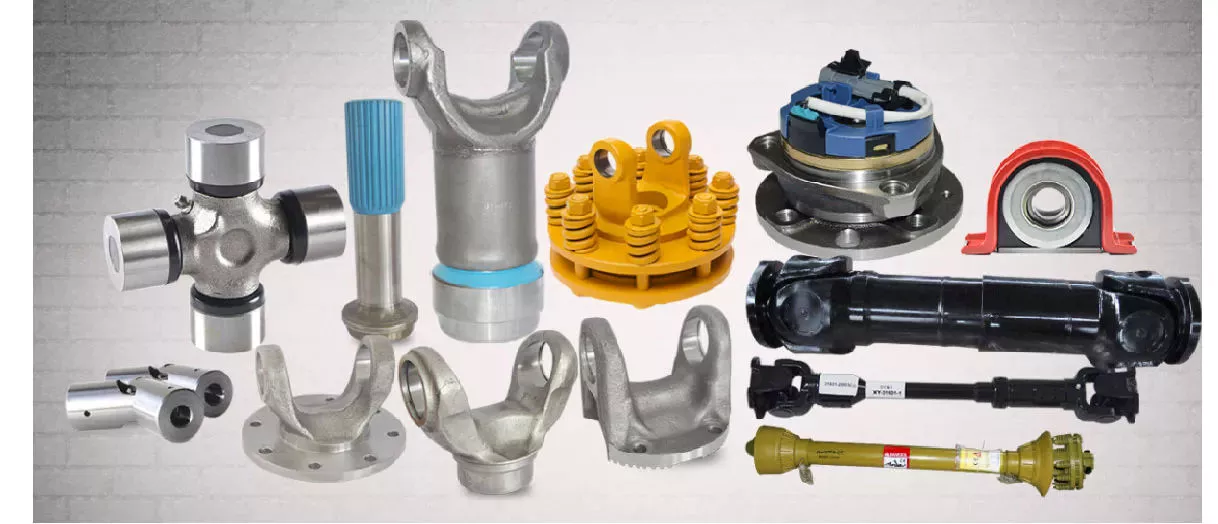
Are there different types of driveline configurations based on vehicle type?
Yes, there are different types of driveline configurations based on the type of vehicle. Driveline configurations vary depending on factors such as the vehicle’s propulsion system, drivetrain layout, and the number of driven wheels. Here’s a detailed explanation of the driveline configurations commonly found in different vehicle types:
1. Front-Wheel Drive (FWD):
In front-wheel drive vehicles, the driveline configuration involves the engine’s power being transmitted to the front wheels. The engine, transmission, and differential are typically integrated into a single unit called a transaxle, which is located at the front of the vehicle. This configuration simplifies the drivetrain layout, reduces weight, and improves fuel efficiency. Front-wheel drive is commonly found in passenger cars, compact cars, and some crossover SUVs.
2. Rear-Wheel Drive (RWD):
Rear-wheel drive vehicles have their driveline configuration where the engine’s power is transmitted to the rear wheels. In this setup, the engine is located at the front of the vehicle, and the drivetrain components, including the transmission and differential, are positioned at the rear. Rear-wheel drive provides better weight distribution, improved handling, and enhanced performance characteristics, making it popular in sports cars, luxury vehicles, and large trucks.
3. All-Wheel Drive (AWD) and Four-Wheel Drive (4WD):
All-wheel drive and four-wheel drive driveline configurations involve power being transmitted to all four wheels of the vehicle. These configurations provide better traction and handling in various driving conditions, particularly on slippery or off-road surfaces. AWD systems distribute power automatically between the front and rear wheels, while 4WD systems are often manually selectable and include a transfer case for shifting between 2WD and 4WD modes. AWD and 4WD configurations are commonly found in SUVs, crossovers, trucks, and off-road vehicles.
4. Front Engine, Rear-Wheel Drive (FR) and Rear Engine, Rear-Wheel Drive (RR):
In certain performance vehicles and sports cars, driveline configurations may involve a front engine with rear-wheel drive (FR) or a rear engine with rear-wheel drive (RR). FR configurations have the engine located at the front of the vehicle, transmitting power to the rear wheels. RR configurations have the engine located at the rear, driving the rear wheels. These configurations provide excellent balance, weight distribution, and handling characteristics, resulting in enhanced performance and driving dynamics.
5. Other Configurations:
There are also various specialized driveline configurations based on specific vehicle types and applications:
- Mid-Engine: Some high-performance sports cars and supercars feature a mid-engine configuration, where the engine is positioned between the front and rear axles. This configuration offers exceptional balance, handling, and weight distribution.
- Front-Engine, Front-Wheel Drive (FF): While less common, certain compact and economy cars employ a front-engine, front-wheel drive configuration. This layout simplifies packaging and interior space utilization.
- Part-Time 4WD: In certain off-road vehicles, there may be a part-time 4WD driveline configuration. These vehicles typically operate in 2WD mode but can engage 4WD when additional traction is needed.
These are some of the driveline configurations commonly found in different vehicle types. The choice of driveline configuration depends on factors such as the vehicle’s intended use, performance requirements, handling characteristics, and specific design considerations.
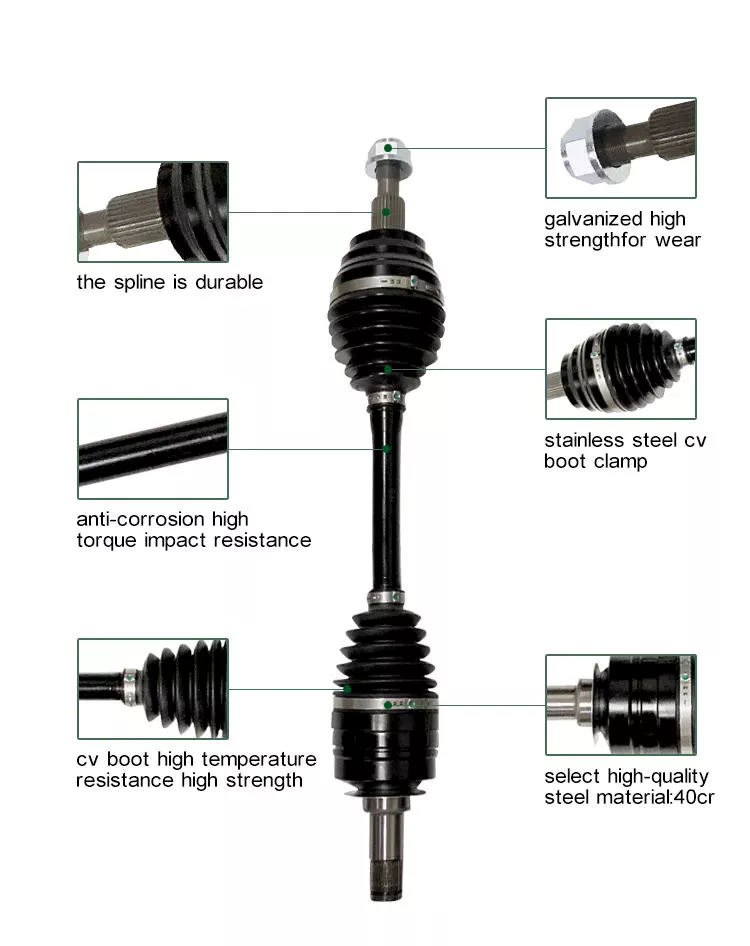
Can you provide real-world examples of vehicles and machinery that use drivelines?
Drivelines are used in a wide range of vehicles and machinery across various industries. These driveline systems are responsible for transmitting power from the engine or motor to the wheels or driven components. Here are some real-world examples of vehicles and machinery that utilize drivelines:
1. Automobiles:
Drivelines are integral to automobiles, providing power transmission from the engine to the wheels. Various driveline configurations are used, including:
- Front-Wheel Drive (FWD): Many compact cars and passenger vehicles employ front-wheel drive, where the driveline powers the front wheels.
- Rear-Wheel Drive (RWD): Rear-wheel drive is commonly found in sports cars, luxury vehicles, and trucks, with the driveline powering the rear wheels.
- All-Wheel Drive (AWD) and Four-Wheel Drive (4WD): AWD and 4WD drivelines distribute power to all four wheels, enhancing traction and stability. These systems are used in SUVs, off-road vehicles, and performance cars.
2. Trucks and Commercial Vehicles:
Trucks, including pickup trucks, delivery trucks, and heavy-duty commercial vehicles, rely on drivelines to transmit power to the wheels. These drivelines are designed to handle higher torque and load capacities, enabling efficient operation in various work environments.
3. Agricultural Machinery:
Farm equipment, such as tractors, combines, and harvesters, utilize drivelines to transfer power from the engine to agricultural implements and wheels. Drivelines in agricultural machinery are engineered to withstand demanding conditions and provide optimal power delivery for field operations.
4. Construction and Earthmoving Equipment:
Construction machinery, including excavators, bulldozers, loaders, and graders, employ drivelines to power their movement and hydraulic systems. Drivelines in this sector are designed to deliver high torque and endurance for heavy-duty operations in challenging terrains.
5. Off-Road and Recreational Vehicles:
Off-road vehicles, such as ATVs (All-Terrain Vehicles), UTVs (Utility Task Vehicles), and recreational vehicles like dune buggies and sand rails, rely on drivelines to provide power to the wheels. These drivelines are engineered to handle extreme conditions and offer enhanced traction for off-road adventures.
6. Railway Locomotives and Rolling Stock:
Drivelines are utilized in railway locomotives and rolling stock to transmit power from the engines to the wheels. These driveline systems are designed to efficiently transfer high torque and provide reliable propulsion for trains and other rail vehicles.
7. Marine Vessels:
Drivelines are employed in various types of marine vessels, including boats, yachts, and ships. They transmit power from the engines to the propellers or water jets, enabling propulsion through water. Marine drivelines are designed to operate in wet environments and withstand the corrosive effects of saltwater.
8. Industrial Machinery:
Industrial machinery, such as manufacturing equipment, conveyor systems, and material handling machines, often utilize drivelines for power transmission. These drivelines enable the movement of components, products, and materials within industrial settings.
9. Electric and Hybrid Vehicles:
Drivelines are a crucial component in electric vehicles (EVs) and hybrid vehicles (HVs). In these vehicles, the drivelines transmit power from electric motors or a combination of engines and motors to the wheels. Electric drivelines play a significant role in the efficiency and performance of EVs and HVs.
These are just a few examples of vehicles and machinery that utilize drivelines. Driveline systems are essential in a wide range of applications, enabling efficient power transmission and propulsion across various industries.

How do drivelines handle variations in torque, speed, and angles of rotation?
Drivelines are designed to handle variations in torque, speed, and angles of rotation within a power transmission system. They incorporate specific components and mechanisms that enable the smooth and efficient transfer of power while accommodating these variations. Here’s a detailed explanation of how drivelines handle variations in torque, speed, and angles of rotation:
Variations in Torque:
Drivelines encounter variations in torque when the power requirements change, such as during acceleration, deceleration, or when encountering different loads. To handle these variations, drivelines incorporate several components:
1. Clutch: In manual transmission systems, a clutch is used to engage or disengage the engine’s power from the driveline. By partially or completely disengaging the clutch, the driveline can temporarily interrupt power transfer, allowing for smooth gear changes or vehicle stationary positions. This helps manage torque variations during shifting or when power demands change abruptly.
2. Torque Converter: Automatic transmissions employ torque converters, which are fluid couplings that transfer power from the engine to the transmission. Torque converters provide a certain amount of slip, allowing for torque multiplication and smooth power transfer. The slip in the torque converter helps absorb torque variations and dampens abrupt changes, ensuring smoother operation during acceleration or when power demands fluctuate.
3. Differential: The differential mechanism in drivelines compensates for variations in torque between the wheels, particularly during turns. When a vehicle turns, the inner and outer wheels travel different distances, resulting in different rotational speeds. The differential allows the wheels to rotate at different speeds while distributing torque to each wheel accordingly. This ensures that torque variations are managed and power is distributed effectively to optimize traction and stability.
Variations in Speed:
Drivelines also need to handle variations in rotational speed, especially when the engine operates at different RPMs or when different gear ratios are selected. The following components aid in managing speed variations:
1. Transmission: The transmission allows for the selection of different gear ratios, which influence the rotational speed of the driveline components. By changing gears, the transmission adjusts the speed at which power is transferred from the engine to the driveline. This allows the driveline to adapt to different speed requirements, whether it’s for quick acceleration or maintaining a consistent speed during cruising.
2. Gearing: Driveline systems often incorporate various gears in the transmission, differential, or axle assemblies. Gears provide mechanical advantage by altering the speed and torque relationship. By employing different gear ratios, the driveline can adjust the rotational speed and torque output to match the requirements of the vehicle under different operating conditions.
Variations in Angles of Rotation:
Drivelines must accommodate variations in angles of rotation, especially in vehicles with flexible or independent suspension systems. The following components help manage these variations:
1. Universal Joints: Universal joints, also known as U-joints, are flexible couplings used in drivelines to accommodate variations in angles and misalignments between components. They allow for smooth power transmission between the drive shaft and other components, compensating for changes in driveline angles during vehicle operation or suspension movement. Universal joints are particularly effective in handling non-linear or variable angles of rotation.
2. Constant Velocity Joints (CV Joints): CV joints are specialized joints used in drivelines, especially in front-wheel-drive and all-wheel-drive vehicles. They allow the driveline to handle variations in angles while maintaining a constant velocity during rotation. CV joints are designed to mitigate vibrations, power losses, and potential binding or juddering that can occur due to changes in angles of rotation.
By incorporating these components and mechanisms, drivelines effectively handle variations in torque, speed, and angles of rotation. These features ensure smooth power transfer, optimal performance, and enhanced durability in various driving conditions and operating scenarios.


editor by CX 2024-04-16
China OEM Steering Column Shaft 48080-5X10A 48080-5X00A 48080-Ec700 48080-Ec71A for CZPT Navara D40 Pathfinder R51 2005- Drive Line
Product Description
| 1. Price : | EXW Price |
| 2.Shipping Way: | By Sea, DHL, UPS, FEDEX or as customers’ requirements |
| 3.Payment Terms: | Via T/T ,L/C ,Paypal ,Westerm Union,Moneygram. |
| 4.Delivery Time: | Within 30 days after deposit or as customers’ requirement |
| 5.Packaging:Packaging: |
1.Carton Box, 4.We can perform according to customer’s requirements |
CZPT Established in 2571, which is a professional manufacturer and exporter that is concerned with the design, development and production of auto parts. We are located in HangZhou, with convenient transportation access. All of our productscomply with international quality standards and are greatly appreciated in a variety of different markets throughout the world.
Covering an area of 10000 square meters, we now have over 100 employees, an annual sales figure that exceeds USD 300,000 and are currently exporting 80% of our production worldwide. Our well-equipped facilities and excellent quality control throughout all stages of production enables us to guarantee total customer satisfaction.
Besides, we have received ISO9001 and CE.As a result of our high quality products and outstanding customer service, we have gained a global sales network CZPT South America.
If you are interested in any of our products or would like to discuss a customorder, please feel free to contact us. We are looking CZPT to forming successful business relationships with new clients around the world in the near future.
/* March 10, 2571 17:59:20 */!function(){function s(e,r){var a,o={};try{e&&e.split(“,”).forEach(function(e,t){e&&(a=e.match(/(.*?):(.*)$/))&&1
| After-sales Service: | 1years |
|---|---|
| Warranty: | 1years |
| Type: | Steering Gears/Shaft |
| Material: | Steel |
| Certification: | ISO |
| Automatic: | Semi-Automatic |
| Samples: |
US$ 500/Piece
1 Piece(Min.Order) | |
|---|
| Customization: |
Available
| Customized Request |
|---|
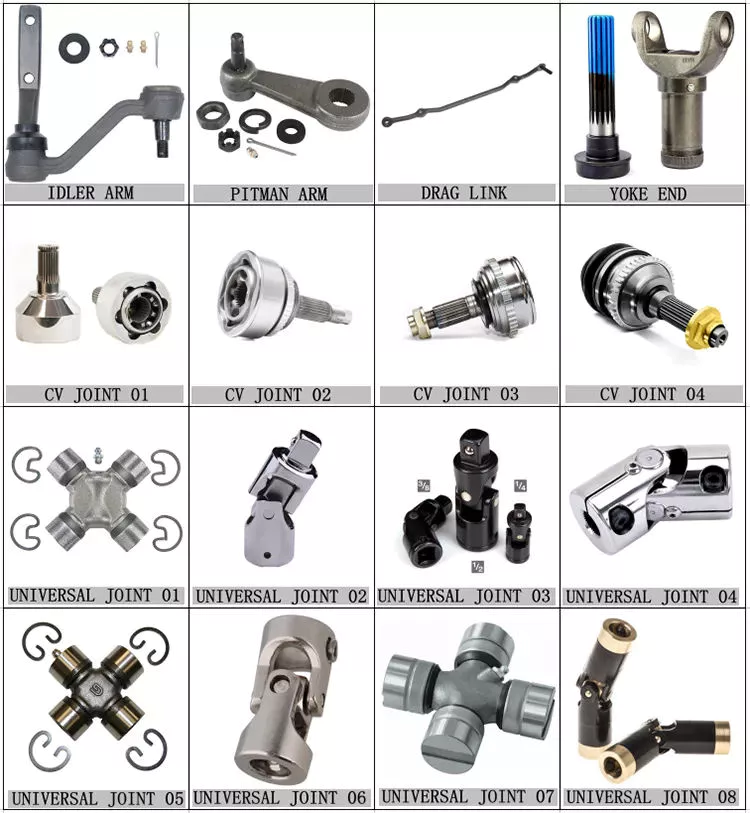
Can drivelines be adapted for use in both automotive and industrial settings?
Drivelines can indeed be adapted for use in both automotive and industrial settings. While there are some differences in the specific requirements and design considerations between these two applications, many fundamental principles and components of drivelines remain applicable to both sectors. Let’s explore how drivelines can be adapted for use in automotive and industrial settings:
1. Power Transmission:
In both automotive and industrial applications, drivelines serve the purpose of transmitting power from a source (such as an engine or motor) to various driven components. The driveline components, including transmissions, clutches, differentials, and shafts, can be adapted and optimized based on the specific power requirements and operating conditions of each application. While automotive drivelines typically focus on delivering power for propulsion, industrial drivelines may transmit power to various machinery and equipment.
2. Gearboxes and Transmissions:
Both automotive and industrial drivelines often incorporate gearboxes or transmissions to provide multiple gear ratios for efficient power transfer. However, the gear ratios and design considerations may differ based on the specific requirements of each application. Automotive drivelines are typically optimized for a wide range of operating conditions, including varying speeds and loads. Industrial drivelines, on the other hand, may be designed to meet specific torque and speed requirements of industrial machinery.
3. Shaft and Coupling Systems:
Shafts and coupling systems are essential components of drivelines in both automotive and industrial settings. They transmit power between different components and allow for misalignment compensation. While automotive drivelines often use driveshafts and universal joints to transmit power to the wheels, industrial drivelines may employ shafts, couplings, and flexible couplings to connect various machinery components such as motors, pumps, and generators.
4. Differentiated Requirements:
Automotive and industrial drivelines have different operating conditions, load requirements, and environmental considerations. Automotive drivelines need to accommodate various road conditions, vehicle dynamics, and driver comfort. Industrial drivelines, on the other hand, may operate in more controlled environments but are subjected to specific industry requirements, such as high torque, continuous operation, or exposure to harsh conditions. The driveline components and materials can be adapted accordingly to meet these different requirements.
5. Control and Monitoring Systems:
Both automotive and industrial drivelines can benefit from advanced control and monitoring systems. These systems can optimize power distribution, manage gear shifts, monitor component health, and improve overall driveline efficiency. In automotive applications, electronic control units (ECUs) play a significant role in controlling driveline functions, while industrial drivelines may incorporate programmable logic controllers (PLCs) or other specialized control systems.
6. Customization and Integration:
Drivelines can be customized and integrated into specific automotive and industrial applications. Automotive drivelines can be tailored to meet the requirements of different vehicle types, such as passenger cars, trucks, or sports vehicles. Industrial drivelines can be designed to integrate seamlessly with specific machinery and equipment, considering factors such as available space, power requirements, and maintenance accessibility.
7. Maintenance and Service:
While the specific maintenance requirements may vary, both automotive and industrial drivelines require regular inspection, lubrication, and component replacement to ensure optimal performance and longevity. Proper maintenance practices, as discussed earlier, are essential for prolonging the lifespan of driveline components in both settings.
In summary, drivelines can be adapted for use in both automotive and industrial settings by considering the unique requirements and operating conditions of each application. While there are some differences in design considerations and component selection, the fundamental principles of power transmission and driveline functionality remain applicable in both sectors.

Are there any limitations or disadvantages associated with driveline systems?
While driveline systems offer numerous advantages in terms of power transmission and vehicle performance, there are also some limitations and disadvantages associated with their use. It’s important to consider these factors when designing, operating, and maintaining driveline systems. Let’s explore some of the limitations and disadvantages:
1. Complex Design and Integration:
Driveline systems can be complex in design, especially in modern vehicles with advanced technologies. They often consist of multiple components, such as transmissions, differentials, transfer cases, and drive shafts, which need to be properly integrated and synchronized. The complexity of the driveline system can increase manufacturing and assembly challenges, as well as the potential for compatibility issues or failures if not designed and integrated correctly.
2. Energy Losses:
Driveline systems can experience energy losses during power transmission. These losses occur due to factors such as friction, heat generation, mechanical inefficiencies, and fluid drag in components like gearboxes, differentials, and torque converters. The energy losses can negatively impact overall efficiency and result in reduced fuel economy or power output, especially in systems with multiple driveline components.
3. Limited Service Life and Maintenance Requirements:
Driveline components, like any mechanical system, have a limited service life and require regular maintenance. Components such as clutches, bearings, gears, and drive shafts are subject to wear and tear, and may need to be replaced or repaired over time. Regular maintenance, including lubrication, adjustments, and inspections, is necessary to ensure optimal performance and prevent premature failures. Failure to perform proper maintenance can lead to driveline malfunctions, increased downtime, and costly repairs.
4. Weight and Space Constraints:
Driveline systems add weight and occupy space within a vehicle. The additional weight affects fuel efficiency and overall vehicle performance. Moreover, the space occupied by driveline components can limit design flexibility, particularly in compact or electric vehicles where space optimization is crucial. Manufacturers must strike a balance between driveline performance, vehicle weight, and available space to meet the requirements of each specific vehicle type.
5. Noise, Vibration, and Harshness (NVH):
Driveline systems can generate noise, vibration, and harshness (NVH) during operation. Factors such as gear meshing, unbalanced rotating components, or improper driveline alignment can contribute to unwanted vibrations or noise. NVH issues can affect driving comfort, passenger experience, and vehicle refinement. Manufacturers employ various techniques, including vibration dampening materials, isolators, and precision engineering, to minimize NVH levels, but achieving complete elimination can be challenging.
6. Limited Torque Handling Capability:
Driveline systems have limitations in terms of torque handling capability. Excessive torque beyond the rated capacity of driveline components can lead to failures, such as shearing of gears, clutch slippage, or drive shaft breakage. High-performance vehicles or heavy-duty applications may require specialized driveline components capable of handling higher torque loads, which can increase costs and complexity.
7. Traction Limitations:
Driveline systems, particularly in vehicles with two-wheel drive configurations, may experience traction limitations, especially in slippery or off-road conditions. Power is typically transmitted to only one or two wheels, which can result in reduced traction and potential wheel slippage. This limitation can be mitigated by utilizing technologies such as limited-slip differentials, electronic traction control, or implementing all-wheel drive systems.
While driveline systems provide crucial power transmission and vehicle control, they do have limitations and disadvantages that need to be considered. Manufacturers, designers, and operators should carefully assess these factors and implement appropriate design, maintenance, and operational practices to optimize driveline performance, reliability, and overall vehicle functionality.
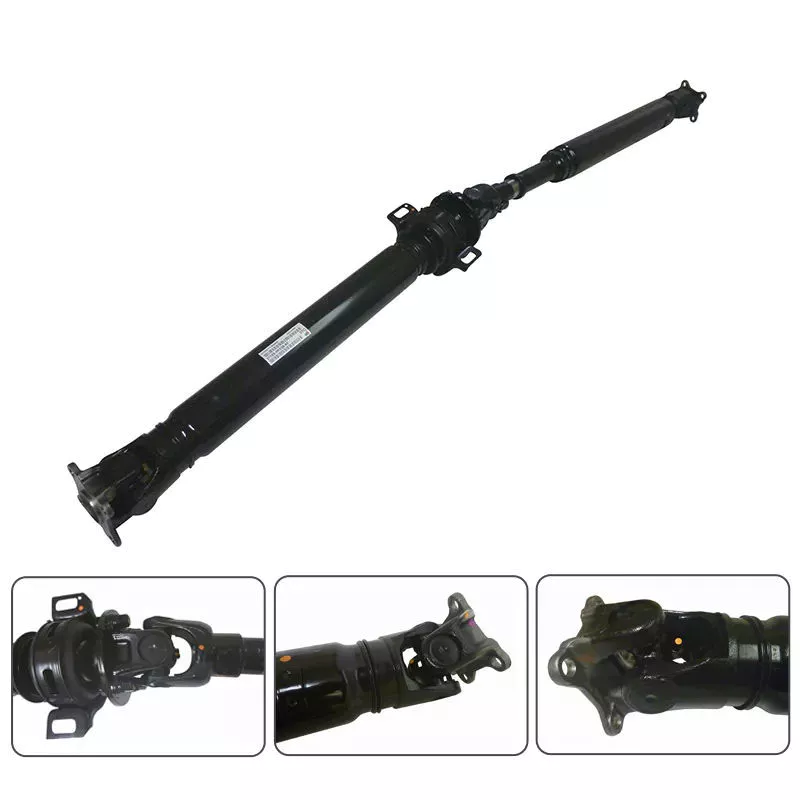
What benefits do drivelines offer for different types of vehicles and equipment?
Drivelines offer several benefits for different types of vehicles and equipment across various industries. They play a critical role in power transmission, mobility, efficiency, and overall performance. Here’s a detailed explanation of the benefits drivelines offer for different types of vehicles and equipment:
1. Power Transmission: Drivelines are designed to efficiently transmit power from the engine or power source to the driven components, such as wheels, tracks, implements, or machinery. They ensure the smooth transfer of torque, allowing vehicles and equipment to generate the necessary power for propulsion, lifting, hauling, or other tasks. By effectively transmitting power, drivelines maximize the performance and productivity of vehicles and equipment.
2. Mobility and Maneuverability: Drivelines enable vehicles and equipment to achieve mobility and maneuverability across various terrains and working conditions. By transmitting power to the wheels or tracks, drivelines provide the necessary traction and control to overcome obstacles, navigate uneven surfaces, and operate in challenging environments. They contribute to the overall stability, handling, and agility of vehicles and equipment, allowing them to move efficiently and safely.
3. Versatility and Adaptability: Drivelines offer versatility and adaptability for different types of vehicles and equipment. They can be designed and configured to meet specific requirements, such as front-wheel drive, rear-wheel drive, four-wheel drive, or all-wheel drive systems. This flexibility allows vehicles and equipment to adapt to various operating conditions, including normal roads, off-road terrains, agricultural fields, construction sites, or industrial facilities. Drivelines also accommodate different power sources, such as internal combustion engines, electric motors, or hybrid systems, enhancing the adaptability of vehicles and equipment.
4. Efficiency and Fuel Economy: Drivelines contribute to efficiency and fuel economy in vehicles and equipment. They optimize power transmission by utilizing appropriate gear ratios, minimizing energy losses, and improving overall system efficiency. Drivelines with advanced technologies, such as continuously variable transmissions (CVTs) or automated manual transmissions (AMTs), can further enhance efficiency by continuously adjusting gear ratios based on load and speed conditions. Efficient driveline systems help reduce fuel consumption, lower emissions, and maximize the operational range of vehicles and equipment.
5. Load Carrying Capacity: Drivelines are designed to handle and transmit high torque and power, enabling vehicles and equipment to carry heavy loads. They incorporate robust components, such as heavy-duty axles, reinforced drive shafts, and durable differentials, to withstand the demands of load-bearing applications. Drivelines ensure the reliable transmission of power, allowing vehicles and equipment to transport materials, tow trailers, or carry payloads efficiently and safely.
6. Safety and Control: Drivelines contribute to safety and control in vehicles and equipment. They enable precise control over acceleration, deceleration, and speed, enhancing driver or operator confidence and maneuverability. Drivelines with features like traction control systems, limited-slip differentials, or electronic stability control provide additional safety measures by improving traction, stability, and handling in challenging road or operating conditions. By ensuring optimal power distribution and control, drivelines enhance the overall safety and stability of vehicles and equipment.
7. Durability and Reliability: Drivelines are built to withstand harsh operating conditions and provide long-term durability and reliability. They are engineered with high-quality materials, precise manufacturing processes, and advanced technologies to ensure the driveline components can endure the stresses of power transmission. Well-designed drivelines require minimal maintenance, reducing downtime and enhancing the overall reliability of vehicles and equipment.
8. Specialized Functionality: Drivelines offer specialized functionality for specific types of vehicles and equipment. For example, in off-road vehicles or heavy-duty construction equipment, drivelines with features like differential locks, torque vectoring, or adjustable suspension systems provide enhanced traction, stability, and control. In agricultural machinery, drivelines with power take-off (PTO) units enable the connection of various implements for specific tasks like plowing, seeding, or harvesting. Such specialized driveline features enhance the performance and versatility of vehicles and equipment in their respective applications.
In summary, drivelines provide numerous benefits for different types of vehicles and equipment. They ensure efficient power transmission, facilitate mobility and maneuverability, offer versatility and adaptability, contribute to efficiency and fuel economy, handle heavy loads, enhance safety and control, provide durability and reliability, and offer specialized functionality. By incorporating well-designed drivelines, manufacturers can optimize the performance, productivity, and overall functionality of vehicles and equipment across various industries.


editor by CX 2024-01-03
China OEM Steering Column Shaft 48080-5X10A 48080-5X00A 48080-Ec700 48080-Ec71A for CZPT Navara D40 Pathfinder R51 2005- Drive Line
Product Description
| 1. Price : | EXW Price |
| 2.Shipping Way: | By Sea, DHL, UPS, FEDEX or as customers’ requirements |
| 3.Payment Terms: | Via T/T ,L/C ,Paypal ,Westerm Union,Moneygram. |
| 4.Delivery Time: | Within 30 days after deposit or as customers’ requirement |
| 5.Packaging:Packaging: |
1.Carton Box, 4.We can perform according to customer’s requirements |
Ideer Established in 2571, which is a professional manufacturer and exporter that is concerned with the design, development and production of auto parts. We are located in HangZhou, with convenient transportation access. All of our productscomply with international quality standards and are greatly appreciated in a variety of different markets throughout the world.
Covering an area of 10000 square meters, we now have over 100 employees, an annual sales figure that exceeds USD 300,000 and are currently exporting 80% of our production worldwide. Our well-equipped facilities and excellent quality control throughout all stages of production enables us to guarantee total customer satisfaction.
Besides, we have received ISO9001 and CE.As a result of our high quality products and outstanding customer service, we have gained a global sales network CZPT South America.
If you are interested in any of our products or would like to discuss a customorder, please feel free to contact us. We are looking CZPT to forming successful business relationships with new clients around the world in the near future.
| After-sales Service: | 1years |
|---|---|
| Warranty: | 1years |
| Type: | Steering Gears/Shaft |
| Material: | Steel |
| Certification: | ISO |
| Automatic: | Semi-Automatic |
| Samples: |
US$ 500/Piece
1 Piece(Min.Order) | |
|---|
| Customization: |
Available
| Customized Request |
|---|
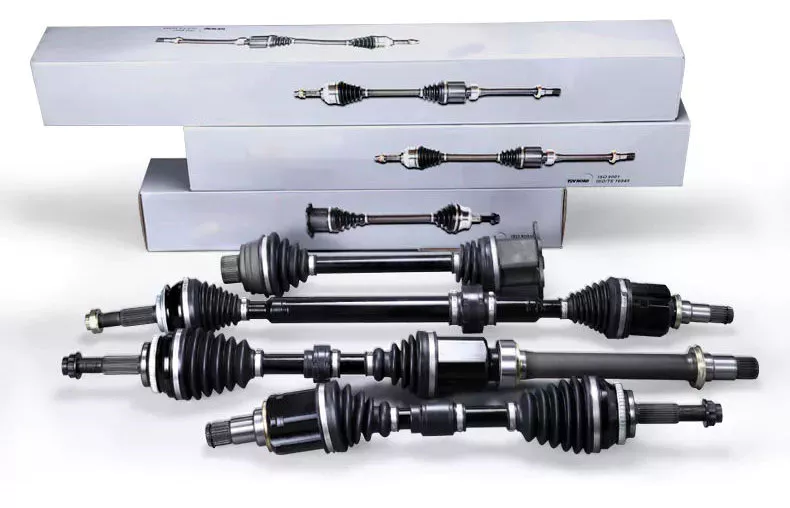
How do drivelines ensure optimal power transfer while minimizing energy losses?
Drivelines play a crucial role in ensuring optimal power transfer from the engine to the wheels while minimizing energy losses. The design and components of the driveline system are carefully engineered to maximize efficiency and minimize power wastage. Here are some key factors that contribute to achieving optimal power transfer and minimizing energy losses within a driveline:
1. Efficient Power Transmission:
Drivelines utilize various components, such as transmissions, clutches, and torque converters, to transmit power from the engine to the wheels. These components are designed to minimize energy losses by reducing friction, improving gear mesh efficiency, and optimizing torque transfer. For example, using low-friction materials, such as roller bearings, and employing advanced gear designs, like helical or hypoid gears, can help reduce power losses due to friction and gear meshing.
2. Gear Ratio Optimization:
The selection of appropriate gear ratios is essential for achieving optimal power transfer. By choosing gear ratios that match the engine’s power characteristics and the vehicle’s driving conditions, the driveline can efficiently convert and transmit power to the wheels. Optimized gear ratios ensure that the engine operates within its optimal RPM range, reducing unnecessary power losses and improving overall efficiency.
3. Limited Slip Differentials:
In driveline systems with multiple driven wheels (such as all-wheel drive or four-wheel drive), limited slip differentials (LSDs) are often employed to distribute power between the wheels. LSDs allow for better traction by transferring torque to the wheels with more grip while minimizing energy losses. By allowing some degree of differential wheel speed, LSDs ensure power is efficiently transmitted to the wheels that can utilize it most effectively.
4. Hybrid and Electric Drivetrains:
In hybrid and electric drivetrains, driveline systems are designed to optimize power transfer and minimize energy losses specific to the characteristics of electric motors and energy storage systems. These drivetrains often utilize sophisticated power electronics, regenerative braking systems, and advanced control algorithms to efficiently manage power flow and energy regeneration, resulting in improved overall system efficiency.
5. Aerodynamic Considerations:
Drivelines can also contribute to optimal power transfer by considering aerodynamic factors. By minimizing air resistance through streamlined vehicle designs, efficient cooling systems, and appropriate underbody airflow management, drivelines help reduce the power required to overcome aerodynamic drag. This, in turn, improves overall driveline efficiency and minimizes energy losses.
6. Advanced Control Systems:
The integration of advanced control systems within drivelines allows for optimized power transfer and efficient operation. Electronic control units (ECUs) monitor various parameters such as throttle position, vehicle speed, and driving conditions to adjust power distribution, manage gear shifts, and optimize torque delivery. By continuously adapting to real-time conditions, these control systems help maximize power transfer efficiency and minimize energy losses.
7. Material Selection and Weight Reduction:
The choice of materials and weight reduction strategies in driveline components contribute to minimizing energy losses. Lightweight materials, such as aluminum or composites, reduce the overall weight of the driveline system, resulting in reduced inertia and lower power requirements. Additionally, reducing the weight of rotating components, such as driveshafts or flywheels, helps improve driveline efficiency by minimizing energy losses associated with rotational inertia.
8. Regular Maintenance and Lubrication:
Proper maintenance and lubrication of driveline components are essential for minimizing energy losses. Regular maintenance ensures that driveline components, such as bearings and gears, are in optimal condition, minimizing frictional losses. Additionally, using high-quality lubricants and maintaining appropriate lubrication levels reduces friction and wear, improving driveline efficiency.
By incorporating these design considerations and engineering techniques, drivelines can achieve optimal power transfer while minimizing energy losses. This leads to improved overall efficiency, enhanced fuel economy, and reduced environmental impact.
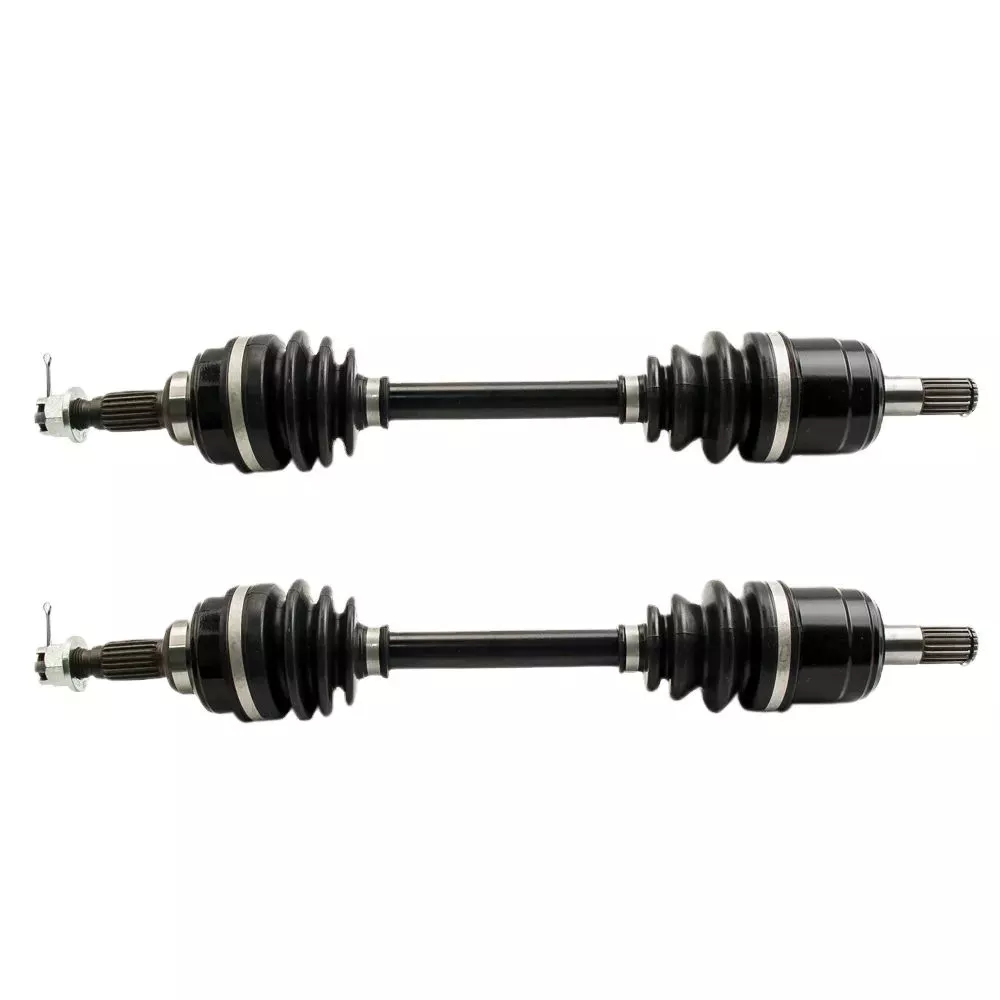
How do drivelines handle variations in speed and direction during operation?
Drivelines are designed to handle variations in speed and direction during operation, enabling the efficient transfer of power from the engine to the wheels. They employ various components and mechanisms to accommodate these variations and ensure smooth and reliable power transmission. Let’s explore how drivelines handle speed and direction variations:
1. Transmissions:
Transmissions play a crucial role in managing speed variations in drivelines. They allow for the selection of different gear ratios to match the engine’s torque and speed with the desired vehicle speed. By shifting gears, the transmission adjusts the rotational speed and torque delivered to the driveline, enabling the vehicle to operate effectively at various speeds. Transmissions can be manual, automatic, or continuously variable, each with its own mechanism for achieving speed variation control.
2. Clutches:
Clutches are used in drivelines to engage or disengage power transmission between the engine and the driveline components. They allow for smooth engagement during startup and shifting gears, as well as for disconnecting the driveline when the vehicle is stationary or the engine is idling. Clutches facilitate the control of speed variations by providing a means to temporarily interrupt power flow and smoothly transfer torque between rotating components.
3. Differential:
The differential is a key component in drivelines, particularly in vehicles with multiple driven wheels. It allows the wheels to rotate at different speeds while maintaining power transfer. When a vehicle turns, the inside and outside wheels travel different distances and need to rotate at different speeds. The differential allows for this speed variation by distributing torque between the wheels, ensuring smooth operation and preventing tire scrubbing or driveline binding.
4. Universal Joints and CV Joints:
Universal joints and constant velocity (CV) joints are used in drivelines to accommodate variations in direction. Universal joints are typically employed in drivelines with a driveshaft, allowing for the transmission of rotational motion even when there is an angular misalignment between the driving and driven components. CV joints, on the other hand, are used in drivelines that require constant velocity and smooth power transfer at varying angles, such as front-wheel drive vehicles. These joints allow for a consistent transfer of torque while accommodating changes in direction.
5. Transfer Cases:
In drivelines with multiple axles or drivetrains, transfer cases are used to distribute power and torque to different wheels or axles. Transfer cases are commonly found in four-wheel drive or all-wheel drive systems. They allow for variations in speed and direction by proportionally distributing torque between the front and rear wheels, or between different axles, based on the traction requirements of the vehicle.
6. Electronic Control Systems:
Modern drivelines often incorporate electronic control systems to further enhance speed and direction control. These systems utilize sensors, actuators, and computer algorithms to monitor and adjust power distribution, shift points, and torque delivery based on various inputs, such as vehicle speed, throttle position, wheel slip, and road conditions. Electronic control systems enable precise and dynamic management of speed and direction variations, improving traction, fuel efficiency, and overall driveline performance.
By integrating transmissions, clutches, differentials, universal joints, CV joints, transfer cases, and electronic control systems, drivelines effectively handle variations in speed and direction during operation. These components and mechanisms work together to ensure smooth power transmission, optimized performance, and enhanced vehicle control in a wide range of driving conditions and applications.

What is a driveline and how does it function in vehicles and machinery?
A driveline, also known as a drivetrain, refers to the components and systems responsible for transmitting power from the engine to the wheels or tracks in vehicles and machinery. It encompasses various elements such as the engine, transmission, drive shafts, differentials, axles, and wheels or tracks. The driveline plays a crucial role in converting the engine’s power into motion and enabling the vehicle or machinery to move. Here’s a detailed explanation of how the driveline functions in vehicles and machinery:
1. Power Generation: The driveline starts with the engine, which generates power by burning fuel or utilizing alternative energy sources. The engine produces rotational force, known as torque, which is transferred to the driveline for further transmission to the wheels or tracks.
2. Transmission: The transmission is a crucial component of the driveline that controls the distribution of power and torque from the engine to the wheels or tracks. It allows the driver or operator to select different gear ratios to optimize performance and efficiency based on the vehicle’s speed and load conditions. The transmission can be manual, automatic, or a combination of both, depending on the specific vehicle or machinery.
3. Drive Shaft: The drive shaft, also called a propeller shaft, is a rotating mechanical component that transmits torque from the transmission to the wheels or tracks. In vehicles with rear-wheel drive or four-wheel drive, the drive shaft transfers power to the rear axle or all four wheels. In machinery, the drive shaft may transfer power to the tracks or other driven components. The drive shaft is typically a tubular metal shaft with universal joints at each end to accommodate the movement and misalignment between the transmission and the wheels or tracks.
4. Differential: The differential is a device located in the driveline that enables the wheels or tracks to rotate at different speeds while still receiving power. It allows the vehicle or machinery to smoothly negotiate turns without wheel slippage or binding. The differential consists of a set of gears that distribute torque between the wheels or tracks based on their rotational requirements. In vehicles with multiple axles, there may be differentials on each axle to provide power distribution and torque balancing.
5. Axles: Axles are shafts that connect the differential to the wheels or tracks. They transmit torque from the differential to the individual wheels or tracks, allowing them to rotate and propel the vehicle or machinery. Axles are designed to withstand the loads and stresses associated with power transmission and wheel movement. They may be solid or independent, depending on the vehicle or machinery’s suspension and drivetrain configuration.
6. Wheels or Tracks: The driveline’s final components are the wheels or tracks, which directly contact the ground and provide traction and propulsion. In vehicles with wheels, the driveline transfers power from the engine to the wheels, allowing them to rotate and propel the vehicle forward or backward. In machinery with tracks, the driveline transfers power to the tracks, enabling the machinery to move over various terrains and surfaces.
7. Functioning: The driveline functions by transmitting power from the engine through the transmission, drive shaft, differential, axles, and finally to the wheels or tracks. As the engine generates torque, it is transferred through the transmission, which selects the appropriate gear ratio based on the vehicle’s speed and load. The drive shaft then transfers the torque to the differential, which distributes it between the wheels or tracks according to their rotational requirements. The axles transmit the torque from the differential to the individual wheels or tracks, allowing them to rotate and propel the vehicle or machinery.
8. Four-Wheel Drive and All-Wheel Drive: Some vehicles and machinery are equipped with four-wheel drive (4WD) or all-wheel drive (AWD) systems, which provide power to all four wheels simultaneously. In these systems, the driveline includes additional components such as transfer cases and secondary differentials to distribute power to the front and rear axles. The driveline functions similarly in 4WD and AWD systems, but with enhanced traction and off-road capabilities.
In summary, the driveline is a vital component in vehicles and machinery, responsible for transmitting power from the engine to the wheels or tracks. It involves the engine, transmission, drive shafts, differentials, axles, and wheels or tracks. By efficiently transferring torque and power, the driveline enables vehicles and machinery to move, providing traction, propulsion, and control. The specific configuration and components of the driveline may vary depending on the vehicle or machinery’s design, purpose, and drive system.


editor by CX 2023-11-14
China Auto Steering Propeller Drive Shaft Transmisson Shaft for Toyota Daihatsu 37140-87404 with Best Sales
Solution Description
| Subject | Auto Steering Propeller Generate Shaft Transmisson Shaft for CZPT Daihatsu 37140-87404 |
| Merchandise Identify | Transmission Shaft/Drive Shaft/Propeller Shaft |
| Element quantity | 37140-87404 |
| Automobile Design | for CZPT Daihatsu |
| Materials | Iron |
| MOQ | 5pcs |
| Warranty | six months |
| Price tag phrase | EXW HangZhou |
| Bundle | Neutral packing |
| Payment | T/T, Western Union, PayPal, Moneygram |
| Shipping time | Little order about 3-7 times,massive purchase about fifteen-thirty times |
| Delivery Way | Convey like DHL/Airline/Sea/Land transportation |
| Sea Port | Hongkong |
|
US $38.46-43.08 / Piece | |
5 Pieces (Min. Order) |
###
| Condition: | New |
|---|---|
| Color: | Black |
| Certification: | SGS |
| Material: | Iron |
| Item Name: | Transmission Shaft/Drive Shaft/Propeller Shaft |
| OE Number: | 37140-87404 |
###
| Subject | Auto Steering Propeller Drive Shaft Transmisson Shaft for Toyota Daihatsu 37140-87404 |
| Item Name | Transmission Shaft/Drive Shaft/Propeller Shaft |
| Part number | 37140-87404 |
| Car Model | for Toyota Daihatsu |
| Material | Iron |
| MOQ | 5pcs |
| Warranty | 6 months |
| Price term | EXW guangzhou |
| Package | Neutral packing |
| Payment | T/T, Western Union, PayPal, Moneygram |
| Delivery time | Small order about 3-7 days,big order about 15-30 days |
| Shipping Way | Express like DHL/Airline/Sea/Land transportation |
| Sea Port | Hongkong |
|
US $38.46-43.08 / Piece | |
5 Pieces (Min. Order) |
###
| Condition: | New |
|---|---|
| Color: | Black |
| Certification: | SGS |
| Material: | Iron |
| Item Name: | Transmission Shaft/Drive Shaft/Propeller Shaft |
| OE Number: | 37140-87404 |
###
| Subject | Auto Steering Propeller Drive Shaft Transmisson Shaft for Toyota Daihatsu 37140-87404 |
| Item Name | Transmission Shaft/Drive Shaft/Propeller Shaft |
| Part number | 37140-87404 |
| Car Model | for Toyota Daihatsu |
| Material | Iron |
| MOQ | 5pcs |
| Warranty | 6 months |
| Price term | EXW guangzhou |
| Package | Neutral packing |
| Payment | T/T, Western Union, PayPal, Moneygram |
| Delivery time | Small order about 3-7 days,big order about 15-30 days |
| Shipping Way | Express like DHL/Airline/Sea/Land transportation |
| Sea Port | Hongkong |
Driveshaft structure and vibrations associated with it
The structure of the drive shaft is critical to its efficiency and reliability. Drive shafts typically contain claw couplings, rag joints and universal joints. Other drive shafts have prismatic or splined joints. Learn about the different types of drive shafts and how they work. If you want to know the vibrations associated with them, read on. But first, let’s define what a driveshaft is.
transmission shaft
As the demand on our vehicles continues to increase, so does the demand on our drive systems. Higher CO2 emission standards and stricter emission standards increase the stress on the drive system while improving comfort and shortening the turning radius. These and other negative effects can place significant stress and wear on components, which can lead to driveshaft failure and increase vehicle safety risks. Therefore, the drive shaft must be inspected and replaced regularly.
Depending on your model, you may only need to replace one driveshaft. However, the cost to replace both driveshafts ranges from $650 to $1850. Additionally, you may incur labor costs ranging from $140 to $250. The labor price will depend on your car model and its drivetrain type. In general, however, the cost of replacing a driveshaft ranges from $470 to $1850.
Regionally, the automotive driveshaft market can be divided into four major markets: North America, Europe, Asia Pacific, and Rest of the World. North America is expected to dominate the market, while Europe and Asia Pacific are expected to grow the fastest. Furthermore, the market is expected to grow at the highest rate in the future, driven by economic growth in the Asia Pacific region. Furthermore, most of the vehicles sold globally are produced in these regions.
The most important feature of the driveshaft is to transfer the power of the engine to useful work. Drive shafts are also known as propeller shafts and cardan shafts. In a vehicle, a propshaft transfers torque from the engine, transmission, and differential to the front or rear wheels, or both. Due to the complexity of driveshaft assemblies, they are critical to vehicle safety. In addition to transmitting torque from the engine, they must also compensate for deflection, angular changes and length changes.
type
Different types of drive shafts include helical shafts, gear shafts, worm shafts, planetary shafts and synchronous shafts. Radial protruding pins on the head provide a rotationally secure connection. At least one bearing has a groove extending along its circumferential length that allows the pin to pass through the bearing. There can also be two flanges on each end of the shaft. Depending on the application, the shaft can be installed in the most convenient location to function.
Propeller shafts are usually made of high-quality steel with high specific strength and modulus. However, they can also be made from advanced composite materials such as carbon fiber, Kevlar and fiberglass. Another type of propeller shaft is made of thermoplastic polyamide, which is stiff and has a high strength-to-weight ratio. Both drive shafts and screw shafts are used to drive cars, ships and motorcycles.
Sliding and tubular yokes are common components of drive shafts. By design, their angles must be equal or intersect to provide the correct angle of operation. Unless the working angles are equal, the shaft vibrates twice per revolution, causing torsional vibrations. The best way to avoid this is to make sure the two yokes are properly aligned. Crucially, these components have the same working angle to ensure smooth power flow.
The type of drive shaft varies according to the type of motor. Some are geared, while others are non-geared. In some cases, the drive shaft is fixed and the motor can rotate and steer. Alternatively, a flexible shaft can be used to control the speed and direction of the drive. In some applications where linear power transmission is not possible, flexible shafts are a useful option. For example, flexible shafts can be used in portable devices.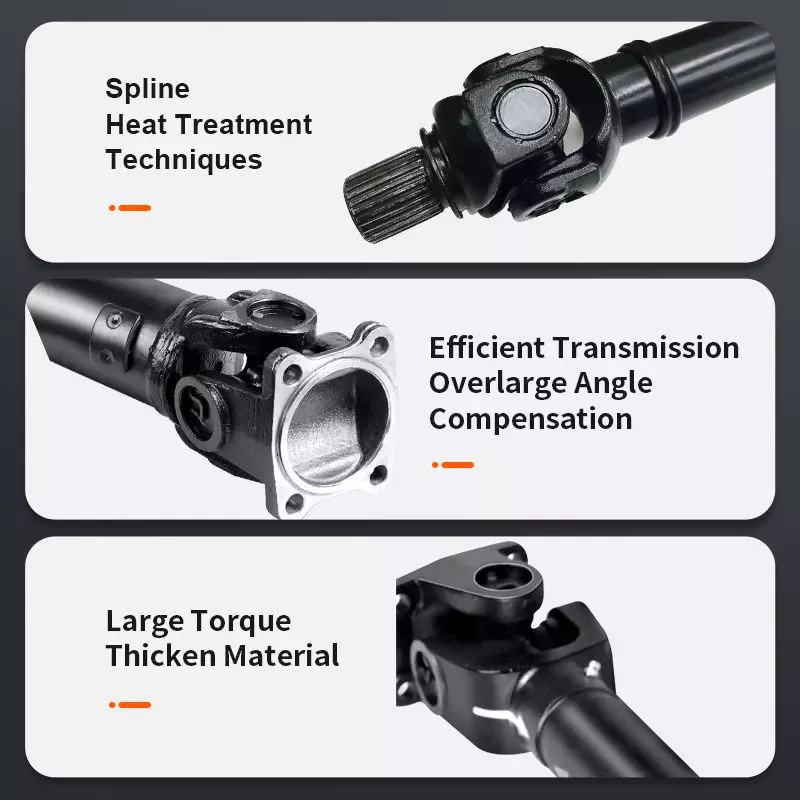
put up
The construction of the drive shaft has many advantages over bare metal. A shaft that is flexible in multiple directions is easier to maintain than a shaft that is rigid in other directions. The shaft body and coupling flange can be made of different materials, and the flange can be made of a different material than the main shaft body. For example, the coupling flange can be made of steel. The main shaft body is preferably flared on at least one end, and the at least one coupling flange includes a first generally frustoconical projection extending into the flared end of the main shaft body.
The normal stiffness of fiber-based shafts is achieved by the orientation of parallel fibers along the length of the shaft. However, the bending stiffness of this shaft is reduced due to the change in fiber orientation. Since the fibers continue to travel in the same direction from the first end to the second end, the reinforcement that increases the torsional stiffness of the shaft is not affected. In contrast, a fiber-based shaft is also flexible because it uses ribs that are approximately 90 degrees from the centerline of the shaft.
In addition to the helical ribs, the drive shaft 100 may also contain reinforcing elements. These reinforcing elements maintain the structural integrity of the shaft. These reinforcing elements are called helical ribs. They have ribs on both the outer and inner surfaces. This is to prevent shaft breakage. These elements can also be shaped to be flexible enough to accommodate some of the forces generated by the drive. Shafts can be designed using these methods and made into worm-like drive shafts.
vibration
The most common cause of drive shaft vibration is improper installation. There are five common types of driveshaft vibration, each related to installation parameters. To prevent this from happening, you should understand what causes these vibrations and how to fix them. The most common types of vibration are listed below. This article describes some common drive shaft vibration solutions. It may also be beneficial to consider the advice of a professional vibration technician for drive shaft vibration control.
If you’re not sure if the problem is the driveshaft or the engine, try turning on the stereo. Thicker carpet kits can also mask vibrations. Nonetheless, you should contact an expert as soon as possible. If vibration persists after vibration-related repairs, the driveshaft needs to be replaced. If the driveshaft is still under warranty, you can repair it yourself.
CV joints are the most common cause of third-order driveshaft vibration. If they are binding or fail, they need to be replaced. Alternatively, your CV joints may just be misaligned. If it is loose, you can check the CV connector. Another common cause of drive shaft vibration is improper assembly. Improper alignment of the yokes on both ends of the shaft can cause them to vibrate.
Incorrect trim height can also cause driveshaft vibration. Correct trim height is necessary to prevent drive shaft wobble. Whether your vehicle is new or old, you can perform some basic fixes to minimize problems. One of these solutions involves balancing the drive shaft. First, use the hose clamps to attach the weights to it. Next, attach an ounce of weight to it and spin it. By doing this, you minimize the frequency of vibration.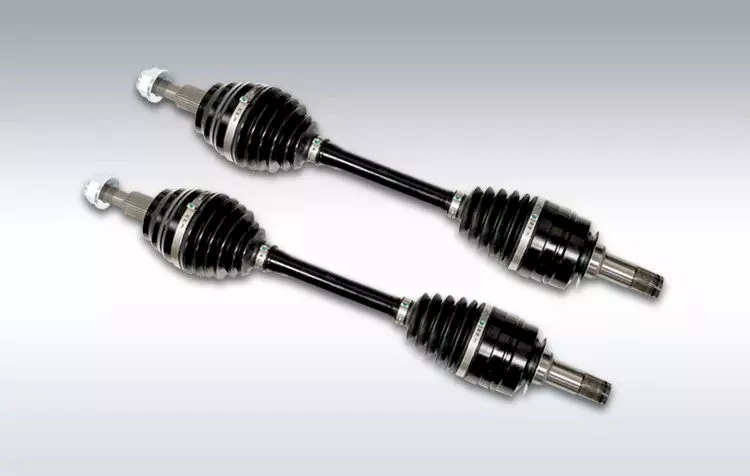
cost
The global driveshaft market is expected to exceed (xxx) million USD by 2028, growing at a compound annual growth rate (CAGR) of XX%. Its soaring growth can be attributed to several factors, including increasing urbanization and R&D investments by leading market players. The report also includes an in-depth analysis of key market trends and their impact on the industry. Additionally, the report provides a comprehensive regional analysis of the Driveshaft Market.
The cost of replacing the drive shaft depends on the type of repair required and the cause of the failure. Typical repair costs range from $300 to $750. Rear-wheel drive cars usually cost more. But front-wheel drive vehicles cost less than four-wheel drive vehicles. You may also choose to try repairing the driveshaft yourself. However, it is important to do your research and make sure you have the necessary tools and equipment to perform the job properly.
The report also covers the competitive landscape of the Drive Shafts market. It includes graphical representations, detailed statistics, management policies, and governance components. Additionally, it includes a detailed cost analysis. Additionally, the report presents views on the COVID-19 market and future trends. The report also provides valuable information to help you decide how to compete in your industry. When you buy a report like this, you are adding credibility to your work.
A quality driveshaft can improve your game by ensuring distance from the tee and improving responsiveness. The new material in the shaft construction is lighter, stronger and more responsive than ever before, so it is becoming a key part of the driver. And there are a variety of options to suit any budget. The main factor to consider when buying a shaft is its quality. However, it’s important to note that quality doesn’t come cheap and you should always choose an axle based on what your budget can handle.


editor by czh 2023-01-16